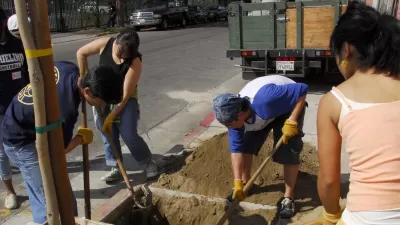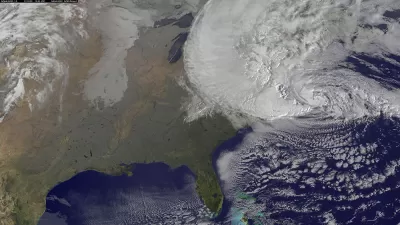Practicing sustainability can improve communities and the lives of those living there. One of the best ways to encourage sustainable living is through volunteering.

Volunteering is a satisfying and powerful way to improve the health and vitality of a growing city. However, the key to developing a sustainable community involves strategic planning and implementation and clear communication of goals.
Although sustainability initiatives bring essential environmental, economic, and social benefits, many activities are easier to put into practice with active participation from neighbors and local businesses. Here are five methods of building a more sustainable community with volunteers.
1. Build a Community Garden
A community garden is an excellent civic engagement initiative for volunteers of all ages to plant fruits, vegetables, and herbs.
In addition to being a great way for neighbors to bond and meet one another, community gardens have several environmental benefits, such as supporting pollinator colonies in cities, enhancing local food sources for low-income families, and reducing the urban heat island effect by absorbing carbon dioxide emissions.
Local schools may also encourage student participation in this project through education and community service.
2. Plant Trees
An effective way to build a sustainable community is for volunteers to plant trees. Urban trees can store as much carbon as tropical rainforests while mitigating soil erosion and serving as food and habitat for urban wildlife.
Unlike trees in rural areas and larger forested regions, urban trees are typically exposed to unique conditions. For example, trees in cities face higher levels of vehicle emissions and air pollution, soil contaminants, windspeeds, reduced access to irrigation and soil drainage, and greater contact with structures and power lines.
Volunteers can help by regularly watering and trimming trees to boost their survivability in urban spaces.
3. Host Cleanups
Neighborhood cleanup events are another way volunteers can build a sustainable community in their cities. You don't need a massive team to accomplish this, either—although it would be great if many people decided to get involved.
One of the benefits of community cleanups is that people of all ages can participate. Neighbors can gather to pick up trash on their block, or volunteers can host a cleanup event at a local park, riverbank, or beach.
Picking up trash removes litter and other harmful debris that threatens wildlife, improves groundwater quality, and protects local habitats.
4. Help Wildlife
Human-animal interactions become more prevalent as humans exploit the environment to develop cities. Although urban areas account for less than 10% of total land surface, the rate of urban sprawl has severe implications for local wildlife.
Community members who love animals can volunteer at wildlife rescue and rehabilitation centers. Whether they’re interested in hands-on animal care or administrative tasks, able and willing volunteers are typically welcome.
5. Create a Community Compost Bin
Along with community gardens, volunteers can build a city-wide compost system to reimagine waste as a vital resource.
The U.S. Department of Agriculture (USDA) estimates that 30 to 40 percent of the U.S. food supply is wasted annually. A composting program allows neighbors to bring their plant-based food waste to local bins for community gardens and other residential gardening projects.
Volunteers can collect organic waste during drop-off hours and maintain the bins. The many benefits of composting include promoting healthy soil, decreasing pesticides, improving water conservation, and enhancing stormwater management.
Strength in Numbers for Continued Progress
Retaining and boosting volunteers is essential for ongoing success. That’s why it’s crucial to find ways to improve the volunteer experience through education and training on green initiatives. Active participation in eco-friendly activities is instrumental in building a healthy and sustainable community.

Manufactured Crisis: Losing the Nation’s Largest Source of Unsubsidized Affordable Housing
Manufactured housing communities have long been an affordable housing option for millions of people living in the U.S., but that affordability is disappearing rapidly. How did we get here?

Americans May Be Stuck — But Why?
Americans are moving a lot less than they once did, and that is a problem. While Yoni Applebaum, in his highly-publicized article Stuck, gets the reasons badly wrong, it's still important to ask: why are we moving so much less than before?

Using Old Oil and Gas Wells for Green Energy Storage
Penn State researchers have found that repurposing abandoned oil and gas wells for geothermal-assisted compressed-air energy storage can boost efficiency, reduce environmental risks, and support clean energy and job transitions.

Greening Oakland’s School Grounds
With help from community partners like the Trust for Public Land, Oakland Unified School District is turning barren, asphalt-covered schoolyards into vibrant, green spaces that support outdoor learning, play, and student well-being.

California Governor Suspends CEQA Reviews for Utilities in Fire Areas
Utility restoration efforts in areas affected by the January wildfires in Los Angeles will be exempt from environmental regulations to speed up the rebuilding of essential infrastructure.

Native American Communities Prepare to Lead on Environmental Stewardship
In the face of federal threats to public lands and conservation efforts, indigenous groups continue to model nature-centered conservation efforts.
Urban Design for Planners 1: Software Tools
This six-course series explores essential urban design concepts using open source software and equips planners with the tools they need to participate fully in the urban design process.
Planning for Universal Design
Learn the tools for implementing Universal Design in planning regulations.
Heyer Gruel & Associates PA
City of Moreno Valley
Institute for Housing and Urban Development Studies (IHS)
City of Grandview
Harvard GSD Executive Education
Salt Lake City
NYU Wagner Graduate School of Public Service
City of Cambridge, Maryland





























